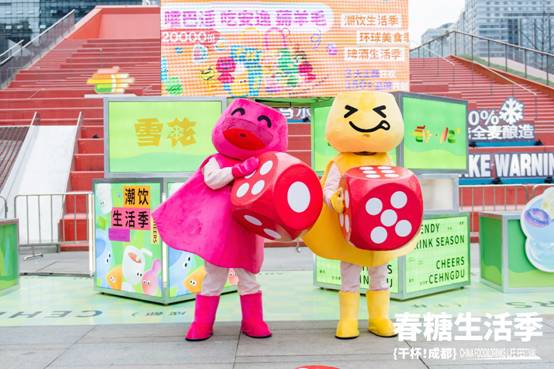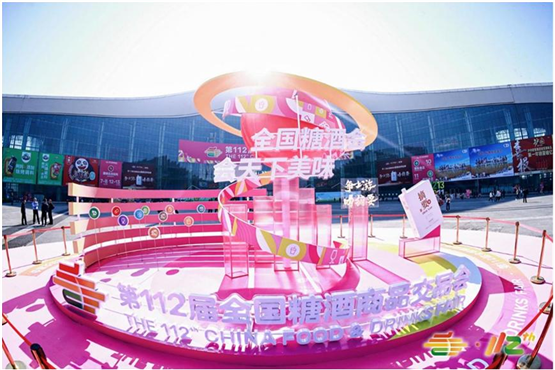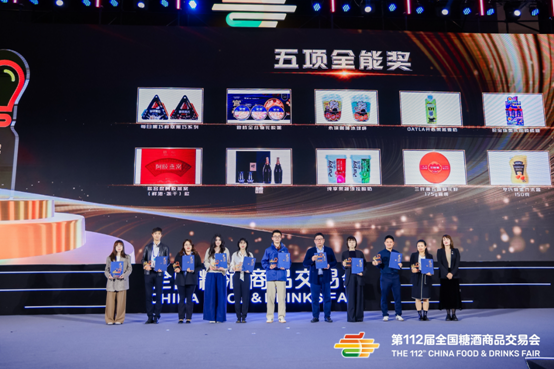Time :Apr-05, 2025, 12:55
In 1955, the inaugural National Sugar & Alcoholic Commodities Fair was held in temporary sheds in Beijing's Xidan district, where exhibitors traded goods carrying sacks of cash. Seventy years later, within Chengdu's dual exhibition halls, mixologists craft cocktails using AI recipe generators, while international buyers inspect factory production lines via VR headsets. The 320,000-square-meter (3.45 million sq ft) exhibition space of the 112th Spring Sugar & Wine Fair serves as a microcosm of China's food industry evolution. With chief partners Jinsha Liquor's Zhaiyao Baijiu for the fair and Snow Beer for the 2025 Spring Sugar Season providing strong backing, as traditional liquor giants compete alongside tech firms, and county-level specialties connect with global supply chains, this "world's premier food & beverage expo" is actively reshaping global industry rules.

Tech Breakthrough: The Tipping Point from "Made" to "Smart-Made"
Within the newly created 2,500-sq-meter (26,910 sq ft) "Artificial Intelligence Zone," a quiet revolution is underway: An intelligent filling line from a Jiangsu machinery firm enables automatic bottle switching and millisecond-level filling volume adjustments; an AI quality control system from a Beijing startup analyzes wine composition via spectroscopy and flags quality fluctuations. Even more disruptive is the technologization of health food – a brand's "Nutrition Cube" device allows users to 3D print personalized vitamin gummies after scanning their body data. "The digital penetration rate in China's food industry has risen from 12% five years ago to 35%," noted a director of the China Food Science and Technology Society during a forum.

Globalization 2.0: New Pathways Abroad for Local Enterprises
As the French Commercial Counsellor in China raised a toast in the wine section, a drama of "reverse export" unfolded at the neighboring booth: Malaysian buyers showed keen interest in the rattan pepper oil production line at a Sichuan condiment company's display. "In the past, we exported raw materials via OEM. Now, we directly export technology and standards," said the company head, showcasing international HACCP certification. The fair's international reach hit a record high: Among exhibitors from 52 countries, Southeast Asian firms surged by 40%, primarily targeting Southwest China's consumer market. Meanwhile, Chinese exporters' "overseas toolkits" are upgrading – a cross-border service provider offered full solutions, from EU food registration to TikTok overseas livestreaming.
County Economies Breakthrough: A Blueprint for Supply Chain Reconfiguration
Dubbed the "Sugar & Wine Solution for Rural Revitalization," the "Hundred Counties, Thousand Products, Ten Thousand Blessings" zone showcased impactful models. A high-starch sweet potato variety from a Henan county attracted bidding from multiple noodle manufacturers; non-GMO soybean meal from a Heilongjiang cooperative became a hot commodity for plant-based meat firms. A sourcing event for chain supermarkets ran concurrently with an industry fund matching session upstairs – a Yunnan walnut milk brand secured 20 million yuan in Pre-A funding on the spot. The zone director calculated: if all 580 potential clients sign contracts, they could boost average annual income in 46 counties by over 300 million yuan.
ESG: The Dawn of a New Industry Race
At the fair's 70th-anniversary forum, industry leaders like Moutai and Yili jointly launched the "Food & Beverage Industry ESG Initiative," requiring signatories to disclose "farm-to-shelf" carbon footprints. This wasn't mere posturing: a dairy exhibitor used interactive screens to showcase methane recovery systems on farms; an imported wine merchant emphasized choosing ocean freight over air for lower emissions. "When Gen Z ranks sustainability as their second purchasing decision factor, ESG has become a new technological barrier," explained an expert from the China Alcoholic Drinks Association.
The Future is Here: Spring Sugar's Next Decade
On the closing evening, crowds reluctant to leave still filled the Western China Expo City. In the "IDEAS Innovative Product Awards" zone, young entrepreneurs exchanged WeChat contacts beside the gold medal-winning non-alcoholic fermented tea beverage – any one of them could nurture the next industry unicorn.

As the Chief Curator of the fair stated: "We are witnessing Spring Sugar's third transformation: from a commodity distribution hub, to a trendsetter, and now into an industry ecosystem incubator." When AI brewing equipment meets highland barley from the Qinghai-Tibet Plateau, and when French château owners sit down with Sichuan pepper farmers, this spring gathering has long transcended mere transactions. It has become the central nervous system of global food and beverage innovation.
